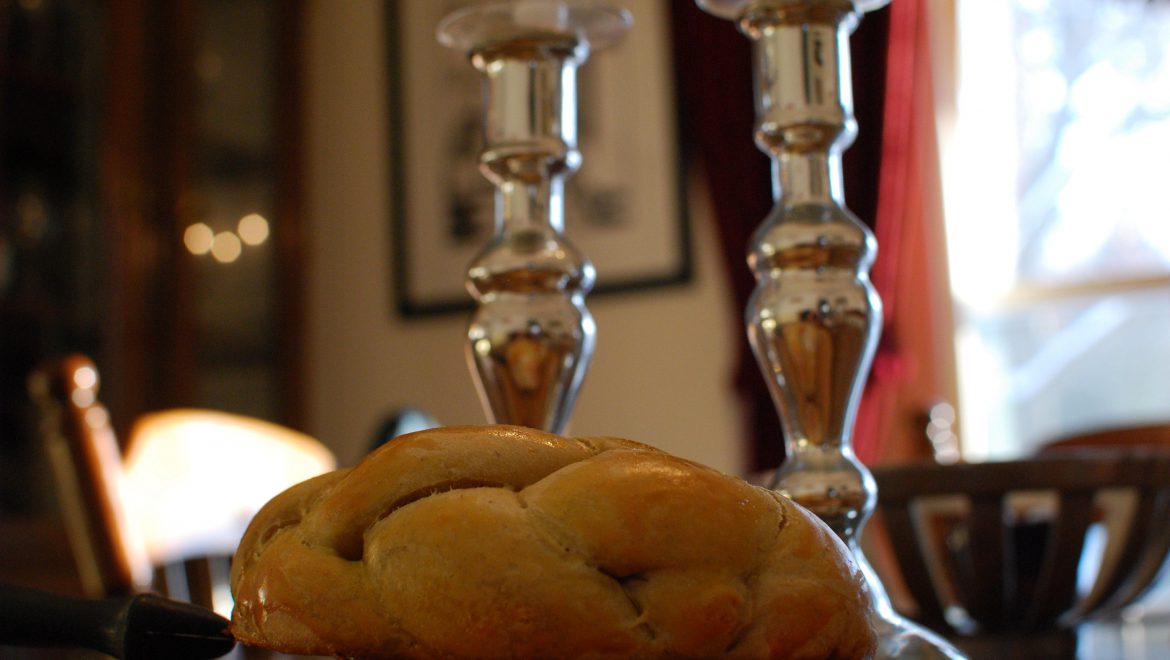
In this short post, Sarah Fishman describes the basics of the challah ceremony, as part of an article introducing the Shabbat home rituals of candle lighting, kiddush over wine, and challah (bread). The author, a rabbinical student at Hebrew Union College-Jewish Institute of Religion in New York, includes the origins and instructions of how to perform the rituals, as well as some of the deeper meanings behind them. This article is from ReformJudaism.org.
Shabbat Home Ritual
I can still smell the Shabbatot of my childhood home. My mother’s chicken roasting in the oven, the smoke from the match that ignited our Shabbat candles, the sweet raisin challah my father bought at Zaro’s Bakery on his way home from work. Indeed, Shabbat at home is often sanctified through food, ritual and familial togetherness. Although a wonderfully diverse array of Shabbat practices exist among today’s Jewish families, disparate Shabbat tables coalesce around the following rituals, creating a vibrant tapestry of Jewish peoplehood and tradition.
Challah: Blessing and Sharing Bread
Technically, “challah” does not connote the delicious braided bread baked to golden-browed perfection by Zaro’s bakery. Rather, “challah” signifies the small fraction of bread that was once donated to the Temple, but today is removed and burned in commemoration. As one is especially mindful of the “challah” offering on Shabbat, the loaves consumed on Shabbat eventually became known as “challah.” It is customary to bless and eat two Challot, in order to recall the double portion of manna that God bestowed upon the Israelites during their time in the wilderness (Exodus 16:22). In addition, it is taught that the Temple’s altar (a symbol of peace) was built with “unhewn” stones rather than tools of warfare. Accordingly, some families avoid cutting their challot, and instead, tear off pieces with their hands. This practice symbolizes the value of “shalom bayit” (peace in the home), a prerequisite for meaningful Shabbat ritual within the home. At some Shabbat tables, as the challah is blessed, each person touches the challah, or touches someone who is touching the challah, so that everyone is connected to that which nourishes and sustains – food, family, and love. As life’s daily commotions permeate our homes, home-based Shabbat rituals become increasingly valuable. Through thoughtful and deliberate “Shabbat at home” practices, our homes can reflect our most sacred values, and we are reminded of life’s most important pursuits.

